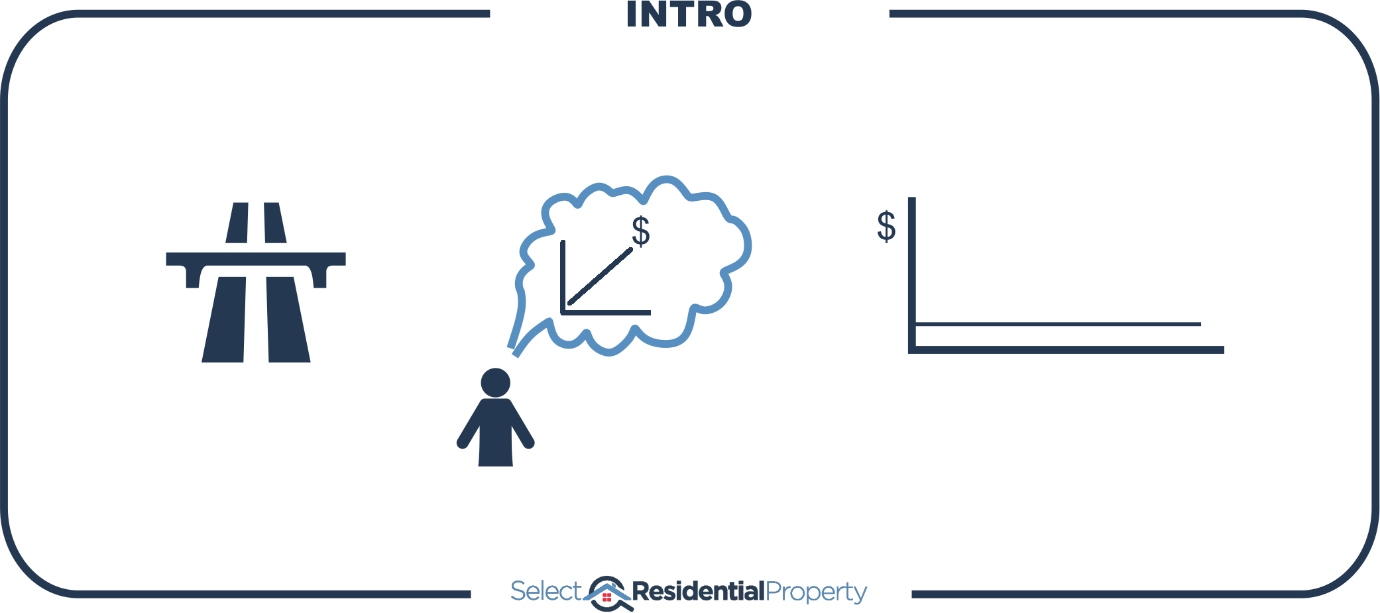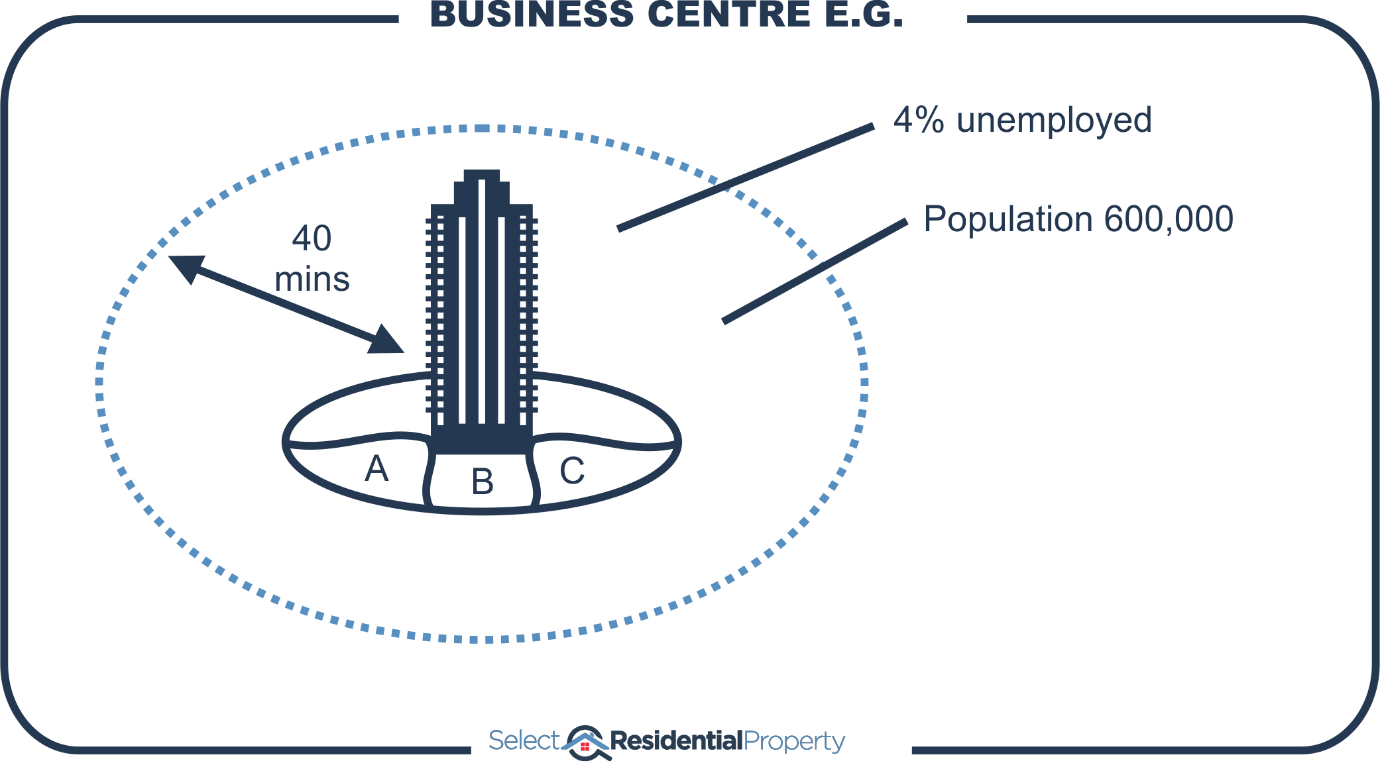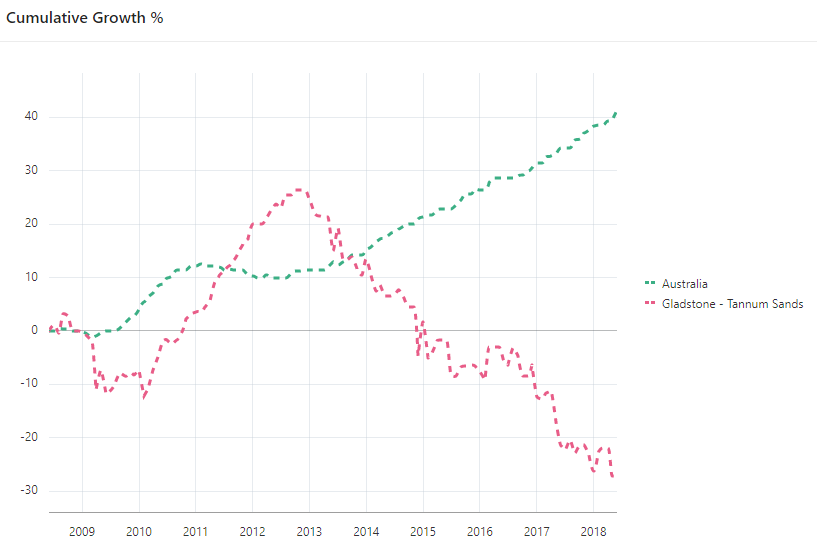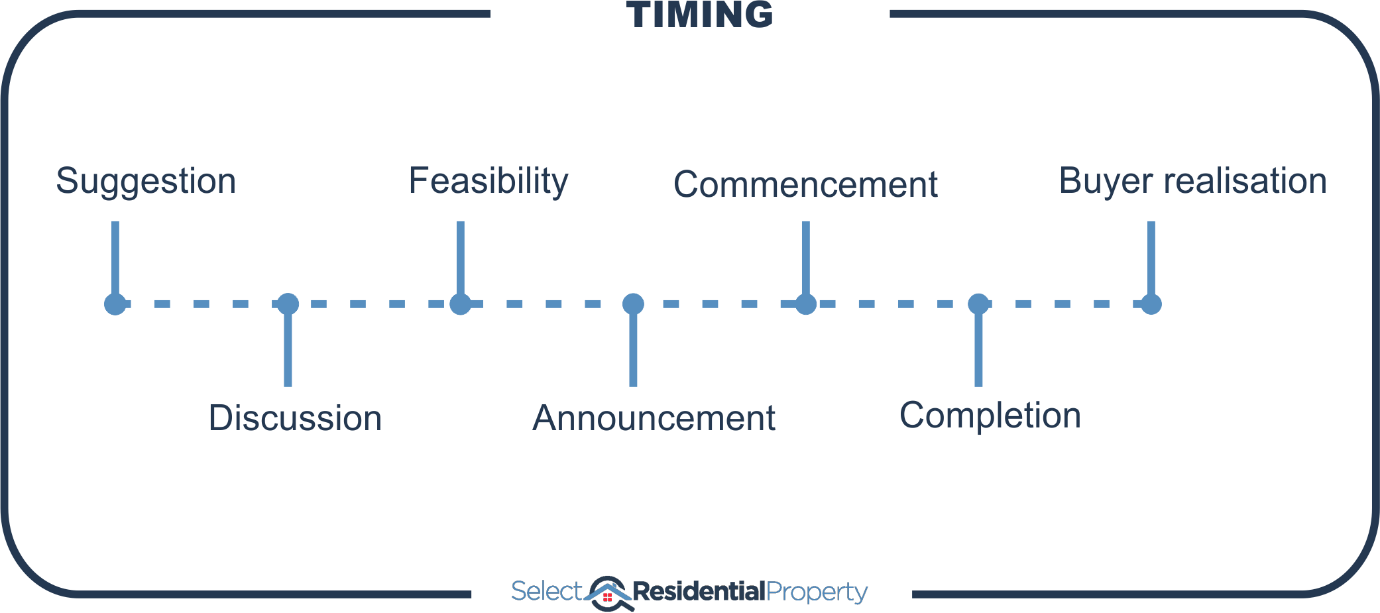A large number of investors chase after infrastructure projects expecting prices to boom. But many investors end up disappointed years later.

The research of infrastructure markets is one of the biggest sink-holes of time and energy a property investor can pursue. And it’s largely unnecessary anyway.
The idea
There are only two ways in which an infrastructure project can push prices up:
- Increased demand
- Decreased supply
A suburb receiving some new amenity like a train station, shopping centre or business park; may increase demand. But they rarely reduce supply – quite the opposite.
Housing workers
Sometimes the project itself creates demand for housing – for the workers. Most infrastructure projects will be staffed by locals, unless:
- It’s a truly remote location
- There’s extremely low unemployment
- There’s a local skill shortage
People are prepared to travel a long way to get to work in the morning. They’re not in the habit of moving their life for a temporary project. So, most infrastructure projects can pool workers from a very wide area.
An example
I had a client who planned to buy in an area of Brisbane that he believed was set for a price surge. His reasons were the completion of a new business centre that would bring 500 new jobs to the area.
I calculated the population within a 40-minute commute of the proposed business centre. I then estimated the unemployment rate for this geography.

There were literally thousands of potential job applicants who had no incentive to move one inch. And if they did move, they had a choice of at least half a dozen suburbs right next door to this new business centre. Not to mention a dozen more that were “close enough”. The estimated pressure placed on housing would be unmeasurably small.
No news is good news
Over the years of publishing supply and demand data…
“I’ve found that the best markets are ones in which there’s nothing going on”
No news is good news for investors because it means developers aren’t interested.
I’ve noticed that a great many hot markets become that way from a gradual shortage of supply which eventually becomes chronic, rather than from a sudden infrastructure project that pushes demand along.
Assessing dollar values
One big problem with infrastructure projects is trying to assess the impact on property prices. You have to convert everything to an estimate of increased demand or limited supply. In most cases, it’s a best guess. You can’t simply relate the project’s budget to price rises as the following example shows…
Gladstone’s massive infrastructure projects
Gladstone in Queensland, back in 2008, had billions of dollars’ worth of projects lined up.
- $90b projects
- 30,000 residents
There were more than $3 million dollars’ worth of infrastructure projects per resident in the city. But prices actually went down, not up. I’ll explain why in a sec.
Miniscule infrastructure
At the other end of the spectrum, I’ve heard one developer promote their project as a “growth market” because the local council had allocated 3 million dollars to road upgrades. $3million is nothing. That might get you a feasibility study for a decent sized project. It’s simply too small to shift the needle.
Big infrastructure – big news
The biggest infrastructure projects make the news headlines. And that means everyone finds out about them, including developers. Some have become disaster areas due to heavy developer activity.
Gladstone in QLD is a prime example. Around 2008, in the heat of the resources boom, there was about 90 billion dollars’ worth of infrastructure projects earmarked for Gladstone. But every developer and his cous’ new about these projects and started building something to house this massive influx of workers that was expected to pour into the city.

There was such a tremendous over-supply of property that flooded the market, the increased demand for housing was completely overwhelmed and property prices actually dropped.
It was made even worse in 2015 when the resources boom ended.
“It’s been more than 10 years and Gladstone prices still haven’t recovered”
Timing
Infrastructure projects can sometimes take a long time to effect prices. Home buyers are slow to realise what the infrastructure means to life in the area.

Home buyers like to see it once it's built and operational. They want to pay a visit and get a feel for it. They don't speculate like investors do.
By the time buyers are aware of the benefits of the new infrastructure and start pushing up demand for property, the infrastructure project could already be a couple of years old.
Recommendation
I suggest investors wait until the project is already influencing supply & demand rather than assume it will. This way you avoid getting caught out if the project is scrapped or takes many more years to complete than you expected.
The growth phases triggered by infrastructure projects are not flash-in-the-pan. If they do start to influence supply & demand, you’ll have plenty of time to enter the market before the growth rate starts to diminish.
Requirements
Most buyers have a lot of requirements on their list:
- Close to work
- Shops
- Good school
- Appropriate housing
- Family
- Parks
- Affordable
- Safe
- Cafes
- Quiet
- Public transport
- Lifestyle/entertainment
- Place of worship
- Fitness facilities
- Restaurants
- Beach
- Etc.
If public transport was improved, that’s great, but it might only be one item on a potential resident’s list of “must-haves”. One project, even a big one, might not sway buyers significantly.
Less appeal
And not all properties in the area will benefit from new infrastructure. A new shopping centre for example could wreak havoc with limited parking and traffic jams. It could disturb the atmosphere in nearby streets that were once considered peaceful and charming.
A new train line will probably have to run past houses, increasing their exposure to noise - same for a new motorway. But an airport is the big noise bringer…
QUT-ATIC
The Queensland University of Technology and the Air Transport Innovation Centre performed a joint study around 2016. It examined how the opening of Brisbane’s new “international” airport in 1988 affected property prices under the flight path.
The report found that price growth suffered for about the next 4 years. But from then on, for the next 20+ years, growth of affected suburbs actually caught up with suburbs that were not affected by aircraft noise.
In other words, the infrastructure’s introduction affected growth rates negatively, but only for a few years. And over the long-term it made no difference.
Alternatives
A better approach to chasing infrastructure projects is to wait and see if they are actually having an impact on the supply and demand of property and to accurately gauge by how much. There are better metrics to gauge supply & demand than the number of dollars spent on a project or the number of jobs it might create.
....................................................................................
 Jeremy Sheppard is head of research at DSRdata.com.au.
Jeremy Sheppard is head of research at DSRdata.com.au.
DSR data can be found on the YIP Top suburbs page.
Click Here to read more Expert Advice articles by Jeremy Sheppard
Disclaimer: while due care is taken, the viewpoints expressed by contributors do not necessarily reflect the opinions of Your Investment Property.